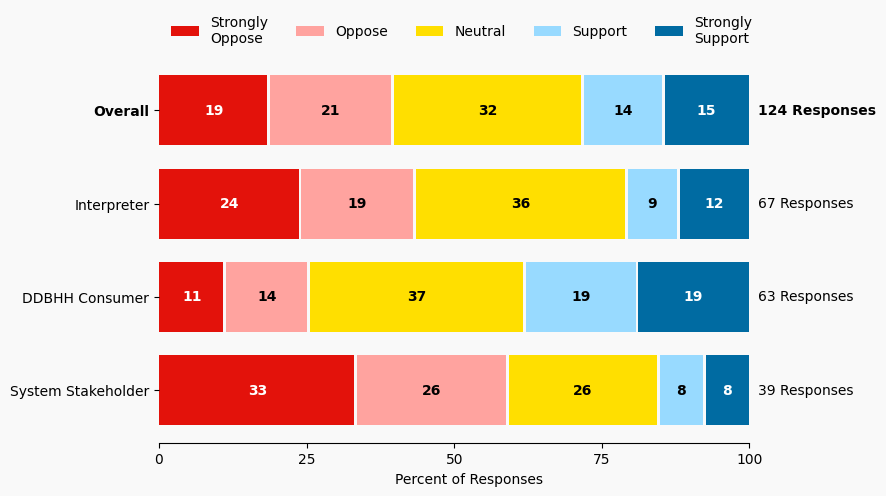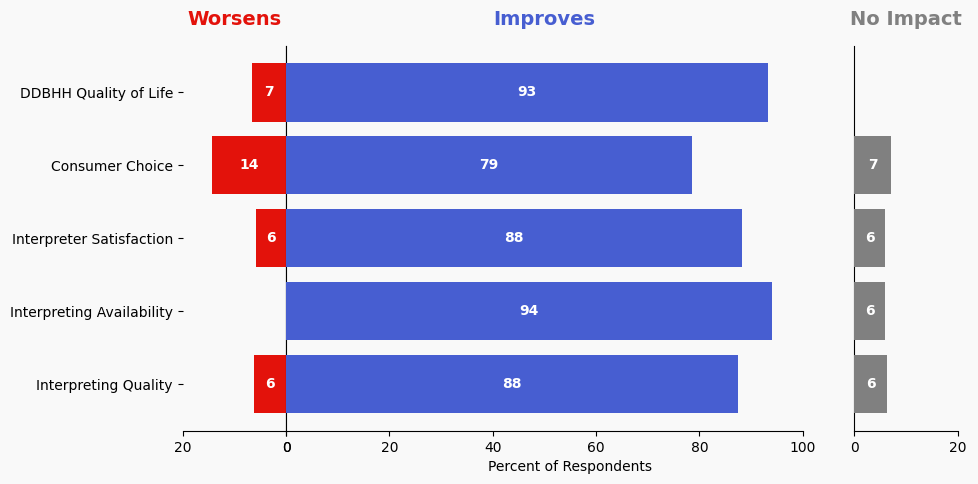20 Make Interpreters State Employees
Issue: Interpreters working with government agencies experience varied levels of compensation, standards required, support and benefits.
Proposed Solution: Minnesota Management and Budget should conduct a survey to determine where all the working interpreters are based, including educational interpreters in K12 settings. MMB could work in coordination with interpreters and their supervisors to create a competitive and standardized package for interpreters. Encourage more staff interpreters for the state, including shared positions that could serve constituents from more than one state agency.
Expected outcome: Standardized and hopefully more competitive compensation packages for state employed interpreters. Additionally, support for professional development, benefits and similar aspects of full time employment may be enjoyed by more interpreters.
Who is impacted: Interpreters working for the state, consumers of state interpreting services
Timeline: 6 months

Summary of Support Image Description
The stacked bar charts show how respondents rated their level of support and the total number of responses. The percentage for the five support levels is shown from left to right: Strongly Oppose (Dark Red), Oppose (Light Red), Neutral (Yellow), Support (Light Blue), and Strongly Support (Dark Blue).
Respondents may identify with multiple subgroups. The overall level of support is:
Overall
Strongly Oppose: 19%
Oppose: 21%
Neutral: 32%
Support: 14%
Strongly Support: 15%
Click to see the detailed image description for each subgroup.
Interpreter
Strongly Oppose: 24%
Oppose: 19%
Neutral: 36%
Support: 9%
Strongly Support: 12%
DDBHH Consumer
Strongly Oppose: 11%
Oppose: 14%
Neutral: 37%
Support: 19%
Strongly Support: 19%
System Stakeholder
Strongly Oppose: 33%
Oppose: 26%
Neutral: 26%
Support: 8%
Strongly Support: 8%
Overview of Respondents Opting for In-Depth Solution Analysis
After indicating their support level, 9% of the 124 respondents opted in to further assess whether the solution would worsen or improve on five metrics. Of the opt-in reviewers (12 respondents), 25% supported the solution, 33% were neutral on the solution, and 41% opposed the solution.
The remaining 112 respondents did not opt in to further assess the solution. Of these people, 28% support the solution, 32% were neutral on the solution, and 39% opposed the solution.
Reviewer Evaluation of Solution Effectiveness

Solution Effectiveness Image Description
The stacked bar charts show how respondents assessed the effectiveness of this solution based on five metrics. For each metric, the percentage of respondents is shown from left to right: Worsens (Red), Improves (Blue), No Impact (Gray).
DDBHH Quality of Life
Makes It Worse 6%
Makes It Better 93%
No Impact 0%
Interpreter Satisfaction
Makes It Worse 5%
Makes It Better 88%
No Impact 5%
Consumer Choice
Makes It Worse 14%
Makes It Better 78%
No Impact 7%
Interpreting Availability
Makes It Worse 0%
Makes It Better 94%
No Impact 5%
Interpreting Quality
Makes It Worse 6%
Makes It Better 87%
No Impact 6%
Reviewer Feedback and Insights
Interpreter
Comments from Interpreters expressed confusion around whether the recommendation affected only those working in roles related to the state but not classified as state employees, or if all interpreters become state employees. One comment raised concerns about state bureaucracy and burnout if interpreters are expected to provide 35-40 hours of interpreting per week. One comment suggests offering full-time status with a more manageable interpreting time (such as 30 hours a week) to prevent burnout. Another comment highlights the appeal of state employee benefits and the potential for improving accessibility to services across agencies.
Deaf, DeafBlind, Hard of Hearing
Comments from DDBHH Consumers cited improved benefits for interpreters.
System Stakeholder
Comments from System stakeholders expressed concerns that introducing government bureaucracy would decrease overall market efficiency. One comment noted that state-employed interpreters could make services more affordable and accessible, particularly for agencies with frequent interpreting needs.
PREVIOUS SOLUTION
19 Centralize Referral System under Minnesota Commission
Issue: All current interpreter referral companies are private, for-profit entities.
NEXT SOLUTION
21 Create Quality Specialist Position in State Government
Issue: No central position to support interpreting issues.
Leave a Reply